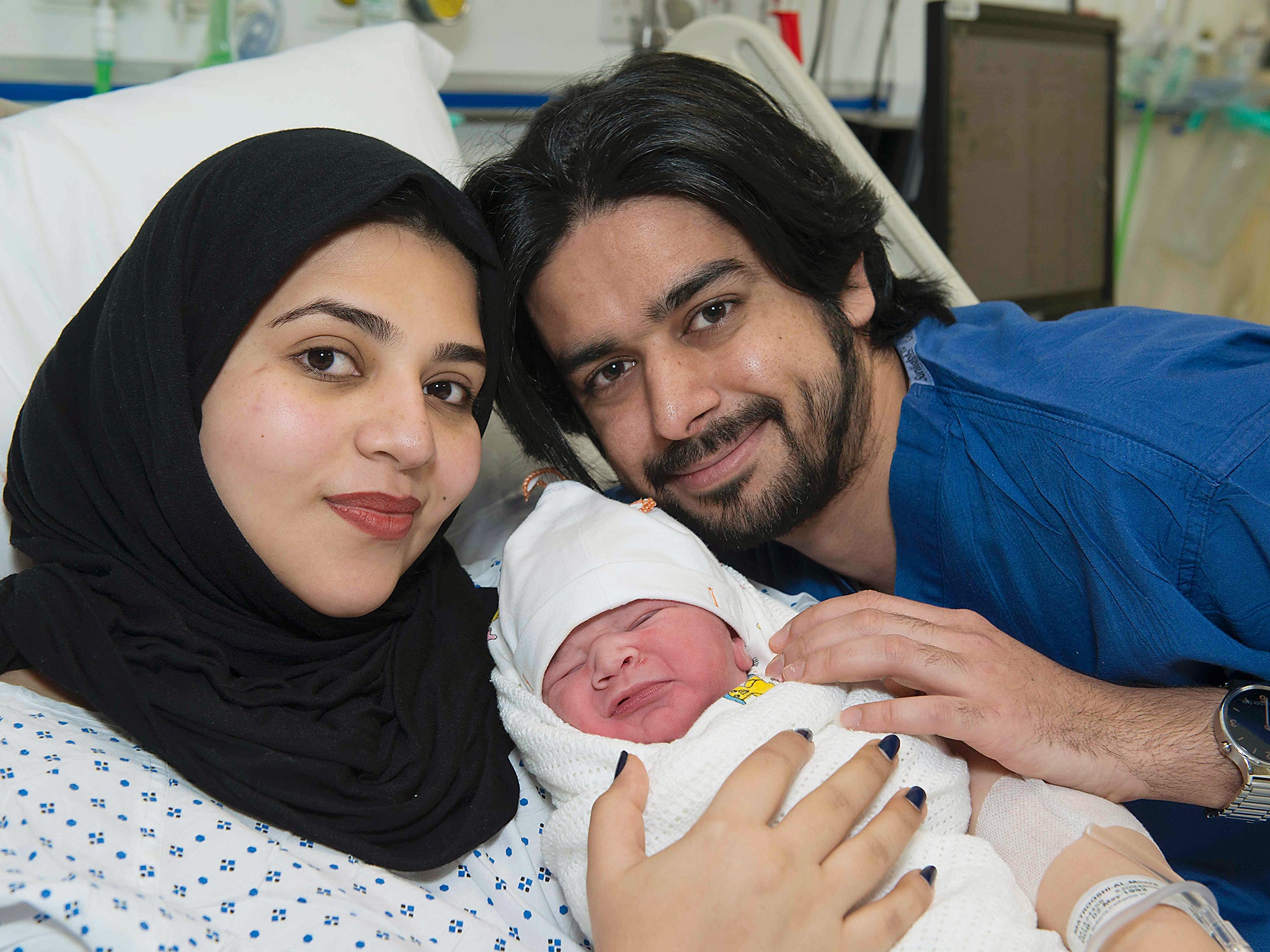Woman believed to be the first to have a baby using ovary frozen before puberty
The case provides evidence that doctors could potentially restore fertility in women by freezing their ovary tissue at a very young age

When she was 9 years old, Moaza Al Matrooshi found out she would need chemotherapy in order to receive a bone-marrow transplant and treat a potentially fatal blood disorder.
Her family worried the chemotherapy would cause her to become infertile, so they made a decision that was considerably rare at the time: they removed her right ovary and froze the tissue.
Last Tuesday, about 15 years later, Al Matrooshi, of Dubai, gave birth to a healthy baby at London’s Portland Hospital for Women and Children. The 24-year-old woman is believed to be the first in the world to deliver a baby after having frozen an ovary tissue before puberty.
The successful birth presents “enormously valuable” news for the parents of young girls requiring risky medical treatments – such as chemotherapy – that can damage ovaries, said Helen Picton, who leads the division of reproduction and early development at the University of Leeds and carried out Al Matrooshi's ovary freezing. The case provides evidence that doctors could potentially restore fertility in these women by freezing their ovary tissue at a very young age, she said.
“She and her family really are courageous – and pioneers – to have done this,” Picton told The Washington Post. “It’s tremendously hopeful technology because you’re investing in the future fertility life of your daughter.”
In an interview with the BBC, Al Matrooshi said the birth of her baby was “like a miracle”.
“We’ve been waiting so long for this result,” Al Matrooshi said. “A healthy baby.”
When Picton preserved Al Matrooshi’s ovary tissue at the University of Leeds in 2001, there was not yet proof the process would work. The first human baby born from ovary tissue preservation would not be delivered until 2004, in Belgium.
“We had no evidence that we would be able to restore her fertility,” Picton said.
Then, two years ago – after more than a decade of advancements in fertility preservation – Al Matrooshi’s doctor reached out to Picton, letting her know the woman wanted to try transplanting the ovary tissue in the hopes of becoming pregnant.
Her doctor, Sara Matthews, had previously worked with Picton as a medical fellow. Picton put the doctor and the woman’s family in contact with a team of surgeons in Denmark who last year transplanted the ovarian tissue back into Al Matrooshi’s body, stitching four slivers to her left ovary and one onto the side of her uterus.
Al Matrooshi had been going through menopause before the surgery, but after, her hormone levels began returning to normal, the BBC reported. She began ovulating and her fertility was restored. After Al Matrooshi and her husband Ahmed underwent IVF treatment – in the hopes of maximizing chances of fertility – three embryos were produced. Two of them were implanted earlier this year.
Through this entire process, Picton has served as a sort of behind-the-scenes architect of Al Matrooshi’s fertility restoration. Over the course of about 15 years, Picton has never met Al Matrooshi – but she would love to someday, she said.
The professor was getting constant updates from Matthews as the pregnancy progressed. “It gets more and more exciting as it goes along,” Picton said. “We had to contain our excitement, because the most important thing is Moaza and her family and the baby.”
Picton was fairly confident the restoration would work, but there was always a sliver of doubt, since it was “a first”, Picton said. On the one hand, doctors have known a girl’s egg bank is more plentiful the younger the age. “But there were a lot of unknowns,” she said.
“The difference is the tissue is much smaller, the girl is much smaller,” Picton said. “You really only have one chance to do this, and you have got to get it right.”
Al Matrooshi was born with beta thalassemia, an inherited blood disorder that can become fatal if left untreated. In addition to being the first case of pre-pubertal freezing, her delivery is the first from a patient who underwent treatment for beta thalassemia, Picton said.
Last year, a woman in Belgium gave birth using ovarian tissue that was frozen at the age of 13, but unlike Al Matrooshi, she had not yet begun going through puberty when her ovary was removed.
Since 2004, more than 60 babies have been successfully born as a result of restoration of ovary tissue. Many more thousands of women have banked their ovarian tissue in the hopes of restoring fertility later on in life. Picton expects many more women will begin giving birth using ovary tissue that was frozen at a young age – even at the age of a toddler.
As for Al Matrooshi, the new mother still has one embryo in storage and two remaining pieces of ovarian tissue. She told the BBC she definitely plans to have another baby in the future.
“I always believed that I would be a mum and that I would have a baby,” she told the BBC. “I didn’t stop hoping and now I have this baby – it is a perfect feeling.”
Join our commenting forum
Join thought-provoking conversations, follow other Independent readers and see their replies
Comments